Anatomy Lecture EXAM
1/156
There's no tags or description
Looks like no tags are added yet.
Name | Mastery | Learn | Test | Matching | Spaced |
|---|
No study sessions yet.
157 Terms
skeletal system
provides support and protection site of hemopoesis(blood cell production),stores calcium and phosphorus, and provides sites for muscle attachment
integumentary system
provides protection, regulates body temp., site of cutaneous receptors, synthesizes vitamin d, and prevents water loss
musclular system
produces body movement and generates heat when muscles contract
endocrine system
consists of glands and cell clusters that secrete hormones some of which regulate body and cellular growth chemical levels in the body and reproductive functions
nervous system
a regulatory system that controls the body movement , respondes to stimuli, and helps control all other systems, also responsible for conciousness intelligence, and memory
cardiovascular system
heart, blood, and blood vessels, the heart moves blood through blood vessels to distribute hormones , nutrients, and gases, and pick up waste.
respiratory system
responsible for exchange of gases between blood and the air in the lungs
digestive system
mechanically and chemically digests food materials absorbs nutrients and expels waste products
lymphatic system
transports and filters lymph fluid transported through lymph vessels and initiates an immune response when necessary
urinary system
filters the blood and removes waste products from the blood concentrates waste products in the form of urine and expels urine from the body
dorsal
toward the back - the spinal cord is ____ side of the body
ventral
toward the belly side- the belly button is on the ___side of the body.
caudal
at the rear or tail end- the abdomen is ____ to the head
rostral
toward the nose or mouth- the frontal bone is ____to the occipital bone
regions?
9 abdominalpelvic regions, 4 abdominla pelvic quadrents
sutures
immovable joints that form boundaries between skull bones
what are the structural categories of joints
fibrous
cartilaginous
synovial
what are the three functional categories of joints
synarthroses , amphiarthoses, and diarthroses
synarthroses
immobile joints
amphiarthroses
slightly mobile
diarthroses
freely movable
removal of old organelles is the process of
autophagy
whats the organelle that provides enzymes for autolysis
lysosomes
what bone is not paired
mandible
What is the correct order for the vertebral regions, from superior to inferior?
Cervical - thoracic - lumbar - sacral - coccygeal
The sternal angle can be used as an anatomical landmark to identify the position of the
the second rib
Rib 1 articulates with vertebra ______ and the ______.
T1; manubrium of the sternum
The lining of the air sacs in the lungs (alveoli) is comprised of what type of epithelium?
Simple squamous
What type of epithelium has the appearance of a group of pillars lined up next to each other?
Simple columnar
Whats included in the pelvic girdle?
the two coxal bones, sacral vertebrae, and coccygeal vertebrae
pectoral girdle ?
scapula and clavicle
When you rest your hands on your hips, just below the waist, you are resting them on the
Illiac crest
An elderly man fell on an outstretched arm and fractured a bone in his antebrachium. Therefore, he may have injured the
radius or ulna.
Osteolysis is
the release of calcium and phosphate from the matrix.
An example of a flat bone would be the
parietal bone
Which of the abdominal muscles is responsible for taking in a breath?
the diaphragm
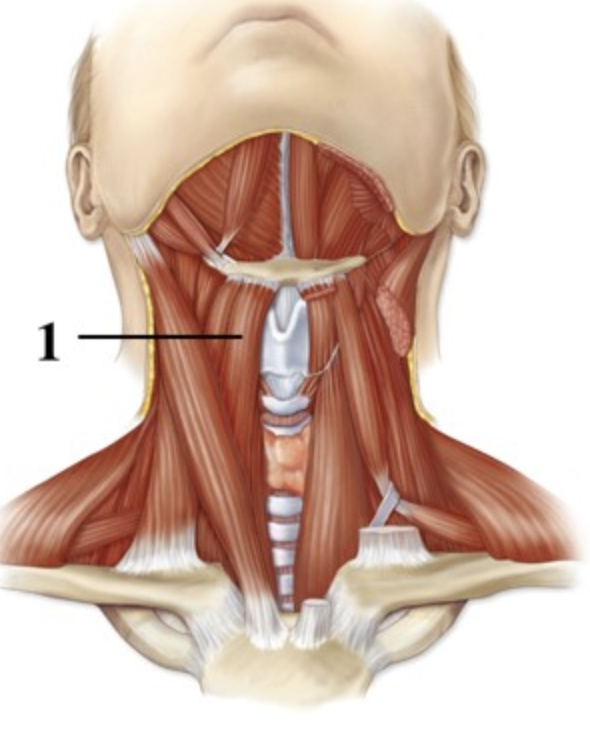
The muscle indicated by the number 1 is a(n) _______________ muscle and therefore ________________ the hyoid bone.
infrahyoid; depresses
Which skin markings usually disappear during childhood?
Capillary hemangiomas
An individual may become pale when exposed to cold temperatures. This is due to
vasoconstriction of dermal blood vessels.

whats highlighted
Pectineus
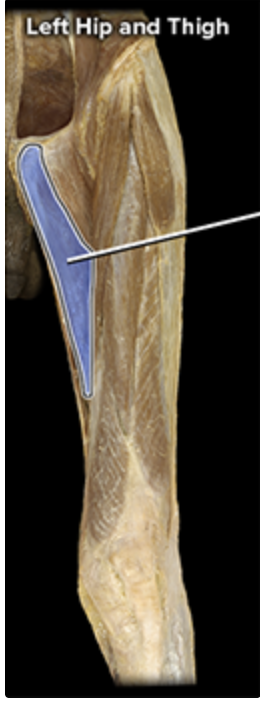
whats highlighted
adductor longus
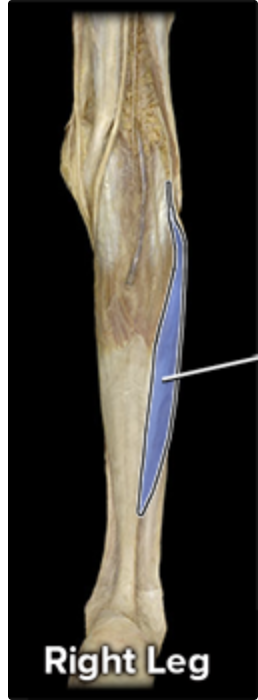
Whats highlighted
Soleus

Whats highlighted
Mentalis
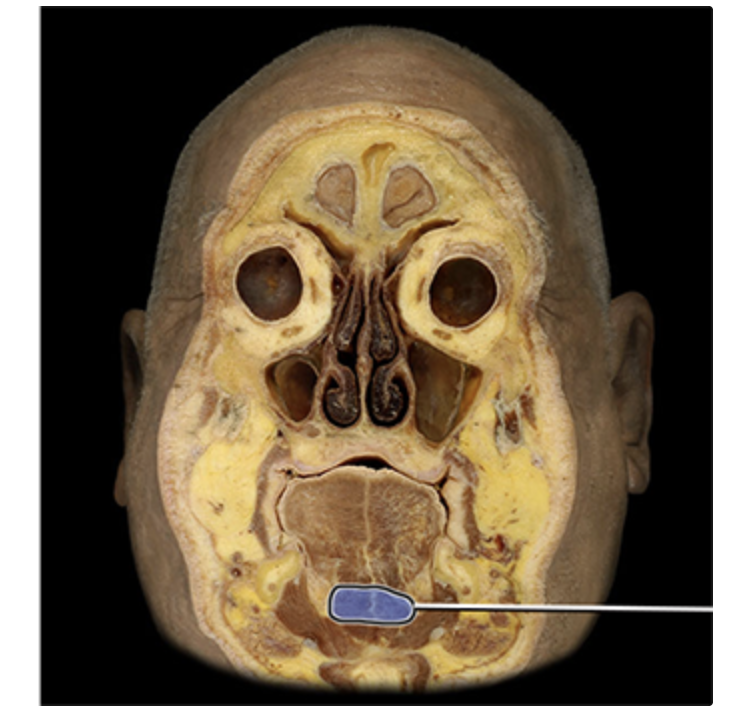
Whats highlighted
Geniohyoid
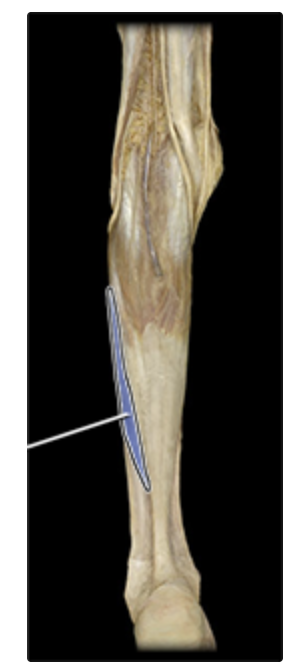
whats highlighted
Soleus
Which condition is specifically associated with aging and/or extreme exercise and is commonly called “wear and tear arthritis”?
osteoarthritis
Which region of a somite differentiates into the skeletal muscles?
myotome
A sarcomere is defined as the distance from one _____ to the next.
z disc
During an automobile accident, a friend of yours suffers a fractured femur. As a result, the muscles of the thigh begin to swell, compressing blood vessels and nerves within the quadriceps fascia. If the blood supply is not restored within a few hours, his nerves and muscles could atrophy—a dangerous situation. What condition is he experiencing?
compartment syndrome
Your grandmother complains of pain on the underside of her foot near the heel. Consequently, she has been forced to stop her daily 6 mile run. What condition is most likely causing her pain?
Plantar fasciitis
The _______________ muscle, highlighted in the image below, serves as a rotator cuff muscle.
supraspinatus
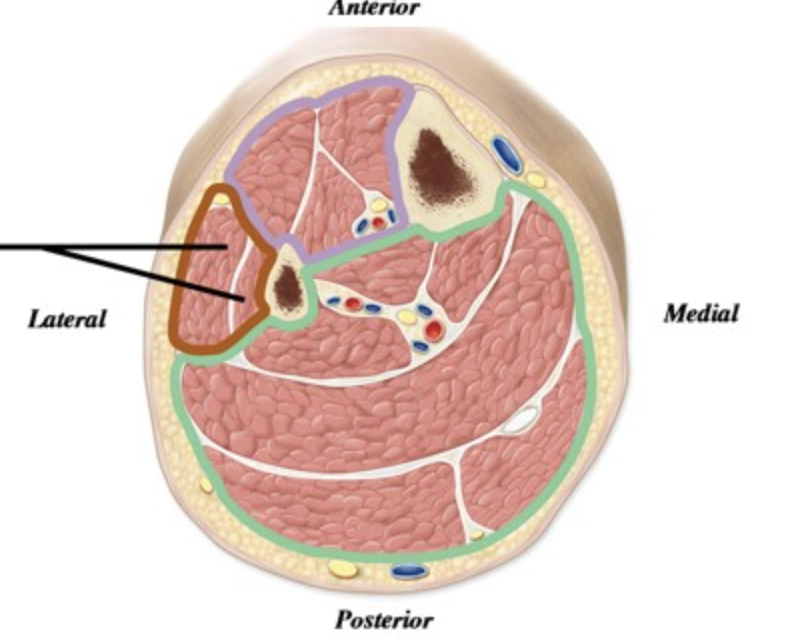
A section through the leg shows the muscle compartments. Regarding the muscles indicated by the number 1, what action do they have on the ankle/foot?
eversion
There are three gluteal muscles. Select the one that is correctly matched with its primary action.
Gluteus medius: abducts the thigh

Superficial and deep arm muscles are shown from an anterior view. Which muscle(s) can move both the elbow joint and glenohumeral (shoulder) joints?
1 only
Superficial and deep arm muscles are shown from an anterior view. Which muscle(s) can move both the elbow joint and glenohumeral (shoulder) joints?
supraspin., infraspin., subscapular., teres minor
plantar
sole of the feet
popaletial/patellar
back of the knee, front of the knee
femoral
thigh
dorsum/manus
of the hand, hand
sural
calf
antecubital
front of elbow
crural
leg
fibural
lateral aspect of leg
serous membrane
two layers: parietal and visceral
pariteal>visceral>organs
median space in thoracic cavity(chest cavity)
mediastinum
mediastinum
it contains the heart, thymus, esophageal, trachea, and major blood vessels
How many cavities are there
cranial/vertebral canal(2 posterior cavities), thoracic/abdominopelvic(2 ventral cavities)
inguinal
groin
What is the total number of phalanges in a normal human body?
56
axil skeleton
thoracic cage, vertebrae, skull
extensor of the thigh and laterally rotates
gluteus maximus
abductor of the thigh/medially rotates
gluteus medius and the minimus works synergistically
hamstring muscles -move both thigh/knee, how?
biceps femoris, semimembranosus, and semitendinosus, adductor magnus(hamstring part)—extension
psoas major
flexes thigh
illiacus
flexes thigh
sartorius
flexes thigh/leg and rotates thigh laterally
rectus femoris
flexes thigh/extends leg
anterior thigh flexors
psoas major,illiacus,sartorius,rectus femoris
adductor longus
adducts thigh/flexes thigh
adductor brevis
adducts thigh/flexes thigh
Gracilis
adducts and flexes thigh/flexes leg
pectineus
adducts/flexes thigh
adductor magnus
adducts thigh-adductor part of muscle flexes thigh, hamstring part extends and rotates thigh
oburator externus
laterally rotates thigh
thigh abductor/medially rotates thigh
tensor fasciae latae
laterally rotates thigh
piriformis, superior gemellus, orburator internus,inferior gemellus,quadratus femoris
biceps femoris
extends thigh( long head) flexes leg (both long/short head )/laterally rotates leg
Semimebranosus
extends thigh and flexes leg/medially rotates leg
semitendinosus
extends thigh and flexes leg, medially rotates leg
anterior leg msucles
dosiflex the foot/extend the toes
lateral leg muscles
plantar flex and evert the foot
posterior leg muscles
flex the leg/plantar flex the foot/flex the toes
The folds of the internal membrane of a mitochondrion are called
Cristae

Which number in the figure represents formation of a lysosome?
6c
How many pairs of ribs articulate (directly or indirectly) with the sternum?
10
Which feature is unique to the axis?
dens
Of the four largest types of sutures in the skull, which are paired?
squamous
Nonkeratinized stratified squamous epithelium is found lining each of these locations except the
small intestine.
Your professor says something profoundly funny. You are tempted to laugh but because you failed to brush your teeth this morning all you can do is to manage a closed-mouth smile. What muscle are you primarily using?
ristoris
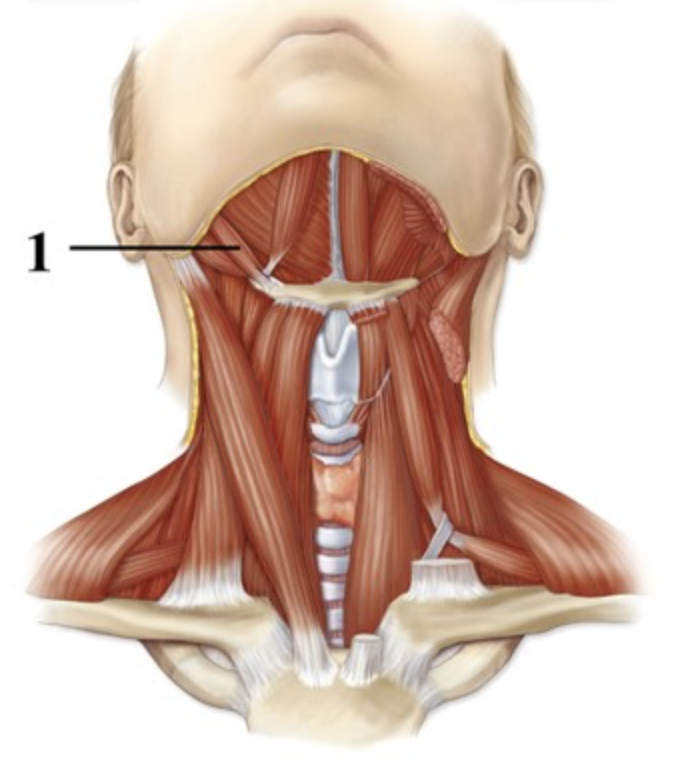
whats this…
suprahyoid/elevates